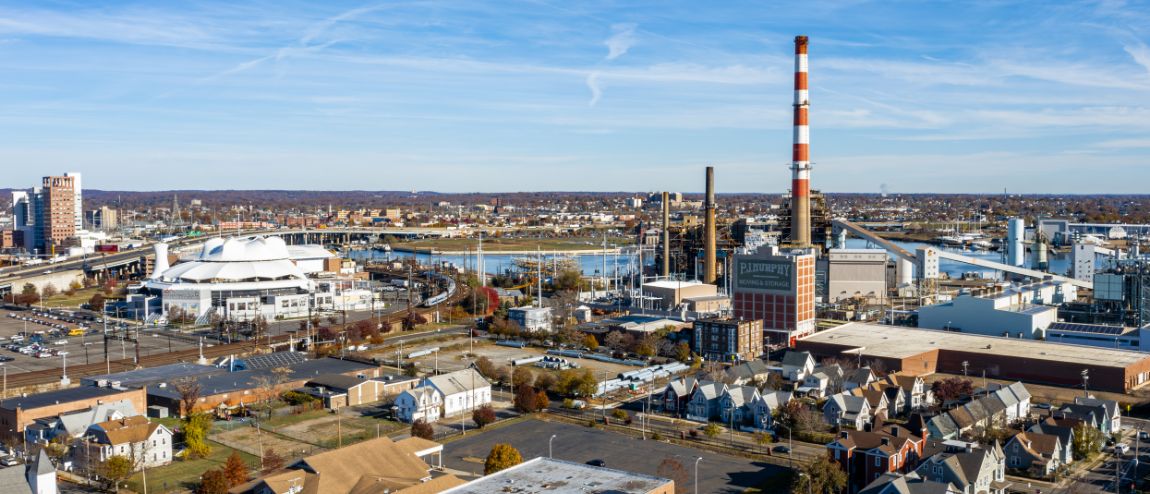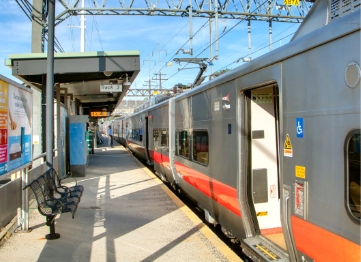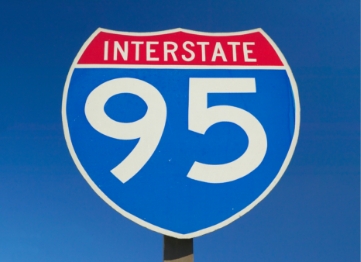
DOING BUSINESS
Infrastructure
As an important urban center in Connecticut, the Greater Bridgeport Area has a well-developed infrastructure to support its economic, transportation, and community needs.
Transportation
While the main mode of transportation is the robust road network, with I-95 bisecting the corridor and connecting directly to New York City and the rest of the Eastern Seaboard, driving is by no means the only option for moving around the area. More than 56,000 riders daily use the Greater Bridgeport Area’s Metro-North commuter rail system, accessible from train stations in Bridgeport, Fairfield, and Stratford.
Public transportation is served by the Greater Bridgeport Transit Authority (GBTA), which operates buses throughout the region. The Bridgeport Intermodal Transportation Center facilitates the interface of six different transportation modes in a single interconnected complex: bus, commuter rail, Amtrak, ferry, water taxi, and taxi.
The Bridgeport-Port Jefferson Ferry provides a vital link to Long Island, New York. Additionally, for regional and general aviation, Igor I. Sikorsky Memorial Airport in Stratford offers connections to nearby cities.
Commuter
Rail Stations
Bridgeport, Fairfield, Stratford

9 Miles
From Stratford
to Fairfield on I-95


Utilities
The area has a varied and reliable supply of utilities. Electricity is provided by the regional utility company, Eversource Energy. Natural gas service is available through various providers. The region also has access to clean water supplied by local water utility and Eversource subsidiary Aquarion Water Company.
Telecommunications
The telecommunications infrastructure in the Greater Bridgeport Area is well-developed. High-speed internet and cable television services are readily available from multiple providers. Mobile phone coverage is also generally reliable, with major wireless carriers serving the region.
Public Services
The Greater Bridgeport Area has a comprehensive network of public services, including police and fire departments, public libraries, parks, and recreational facilities. These services contribute to the well-being and safety of the community.